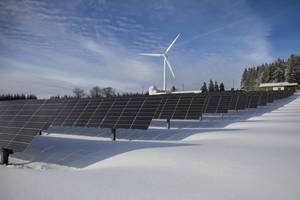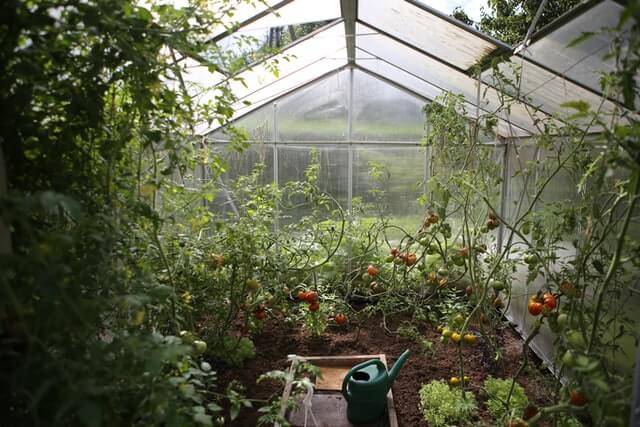Air Conditioning: Keep Cool the Energy-Efficient Way
Air-conditioning: it's a relief on a hot summer's day — until your monthly utility bill arrives.
But it doesn't have to be that way.
With the right air conditioning unit and a few good habits, you can stay cool for a lot less this summer.
Got it? Great, let’s dig in.
Table of Contents
Choosing the Right Air Conditioner
If you're in the market for a new air conditioner, stick to ENERGY STAR-qualified models, which use at least 14 percent less electricity than conventional models. They also often include valuable features such as timers, temperature sensors, and programmable thermostats that can save you money by ensuring you don't over-cool your home.
Be careful when deciding on air conditioner size. Many people buy air conditioners that are bigger than they need. For example, a 10,000 BTU model will cool a 400 square foot area; but you only need a 5,000 BTU model to cool a 150 square foot room. Smaller units will cost less and use less energy — which means they'll also be cheaper to operate.
If you have a no-frills air conditioner that works just fine and aren't planning on buying a new model, there are still plenty of energy savings.
Smart Air Conditioning Operation
First of all, disregard the myth that an air conditioner works harder to recool a warm house than it does maintain a cool temperature. While it does take more energy to run an air conditioner at full blast than it does to run it on low, the difference is a fraction of the energy needed to keep a house cool all day long while there's nobody to enjoy it — especially since many people keep their AC on high even when they're not home.
So turn down your air conditioning when you leave the house and when you go to sleep; when it's not that hot, turn it off altogether. If, when you come home, your house or apartment is hotter inside than the air outside, don't turn on the air conditioning right away. Instead, open a window and let the natural breezes cool your room first, and then turn on your air conditioning. Even better, on mild days, leave the windows open and just use a fan.
When you do turn your air conditioner back on, set its thermostat to your ideal temperature. Setting it to a colder than the desired temperature won't cool down your house any quicker — it will just keep your unit working longer than necessary.
Finally, make sure to clean your unit regularly. A clogged filter will not only force your air conditioner to work harder it also will send out less cool air.
Cool Roofs: What are They and Why So Cool?
Every year, Americans spend about $40 billion to keep buildings air-conditioned, and in doing so, consume about one-fifth of all electricity generated in the U.S.
Sure, more efficient air-conditioning units can help to bring down homeowners' summer utility bills.
However, an even more effective solution is to reduce the need for AC in the first place through the installation of "cool roofs."
Unlike green roofs, which use vegetation to cool roof surfaces, cool roof products can resemble conventional roofing materials. As a result, they can be used on normal residential sloped roof surfaces and are often easily incorporated into new construction and roof retrofitting.
The best part?
They can cost the same as their conventional counterparts.
How Does a Cool Roof Work?
The sun's rays' heat is absorbed by the roof surface and then transferred to the rest of the building. Two properties determine the "coolness" of a roof: its solar reflectance, or the ability to reflect the sun's rays, and its thermal emittance, or the ability to emit thermal radiation. Conventional black asphalt roofs have very low solar reflectance and thermal emittance; as a result, they absorb a lot of heat. Cool roof materials can reduce roof surface temperatures by almost 100 degrees.
How is that?
Cool roof materials often use lighter colors or incorporate metallic and polymer materials that increase the surface's reflectivity and emittance.
Can a Cool Roof Save Energy and Money?
Analysis conducted by the American Council for an Energy-Efficient Economy of a Sacramento Municipal Utility District program found that homes could save as much as $179 per year on energy bills due to a cool roof installation.
While a slight increase in heating might be necessary during the winter months, it is insignificant compared to the savings accrued from reduced air-conditioning during the summer. Households in warmer climates that use air-conditioning more often than homes in cooler regions will benefit the most from cool roof energy savings.
Installing a Cool Roof
Check if your state offers financial incentives that are often available for homeowners and homebuilders who install cool roof materials in existing or new homes.
The American Recovery and Reinvestment Act once provided a 30 percent tax credit (up to $1,500) for installing particular metal and asphalt roofing products that meet ENERGY STAR requirements in existing homes.
Additionally, certain utility companies offer rebates (as much as $300 for an average 3,000 square foot roof) to install cool roofing materials in new construction and/or roof retrofits.
Q&A about Air Conditioning
Does it take more energy to heat or cool a house?
The truth is, it takes much more energy to heat your home than to cool it. Removing the heat from the inside is consuming up to 3x less power than producing the heat.


